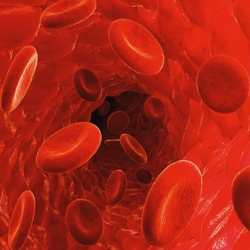
In attempting to free people with diabetes from frequent finger-pricks and drug injections, researchers at Seoul National University have created an electronic skin patch that senses excess glucose in sweat and automatically administers drugs by heating up microneedles that penetrate the skin.
The prototype was developed by Dae-Hyeong Kim, assistant professor at Seoul National University and researchers at MC10, a flexible-electronics company in Lexington, Massachusetts. Two years ago the same group prototyped a patch aimed at Parkinson’s patients that diagnoses tremors and delivers drugs stored inside nanoparticles.
Other efforts to develop minimally invasive glucose monitoring have used ultrasound and optical measurements to detect glucose levels. And a variety of skin patches could deliver insulin or metformin, a popular drug used to treat type 2 diabetes. But the new prototype incorporates both detection and drug delivery in one device.
The patch, described in a paper in Nature Nanotechnology, is made of graphene studded with gold particles and contains sensors that detect humidity, glucose, pH, and temperature. The enzyme-based glucose sensor takes into account pH and temperature to improve the accuracy of the glucose measurements taken from sweat. If the patch senses high glucose levels, heaters trigger microneedles to dissolve a coating and release the drug metformin just below the skin surface.
The only minimally invasive technology for monitoring blood glucose ever approved by the U.S. Food and Drug Administration was a gadget called the GlucoWatch Biographer, which used an electrical current to extract fluids from beneath the skin. It was approved in 2001, but patients complained of discomfort and sores, and the device was pulled from the market in 2007.
